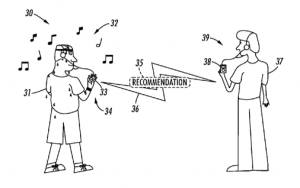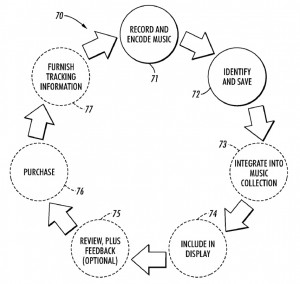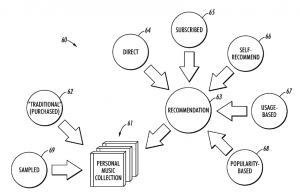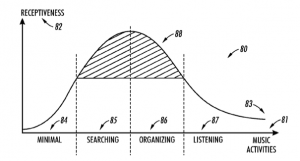 In 2007 a confluence of influences got me thinking about the discovery and distribution of music. Digital music was becoming much more ubiquitous with the success of the iPod. My colleagues at ContentGuard were asking me to think about digital rights again. Finally, social media were getting interesting on the web. I was thinking about the distribution and discovery of news and saw that there were analogies to issues in discovery of music. I did a thought experiment on the future of digital music. How could we make the discovery, recommendation, and purchase of digital music simpler and more convenient?
In 2007 a confluence of influences got me thinking about the discovery and distribution of music. Digital music was becoming much more ubiquitous with the success of the iPod. My colleagues at ContentGuard were asking me to think about digital rights again. Finally, social media were getting interesting on the web. I was thinking about the distribution and discovery of news and saw that there were analogies to issues in discovery of music. I did a thought experiment on the future of digital music. How could we make the discovery, recommendation, and purchase of digital music simpler and more convenient?
This experiment led to an unpublished working paper where I worked out some elements of a new approach to music distribution and purchase that had mixed personal and social influences.
 Technology gets simpler before it gets popular. I was particularly interested in exploring how extreme ease-of-use could guide the design of next generation social music services. Although iPods and the surrounding infrastructure of iTunes had radically simplified digital music, I felt that we had just scratched the surface of music discovery and distribution. Things that should be easy with music players still seemed complicated and awkward. People still needed to master multiple devices and deal with technical issues that could be handled automatically. Simplifying these matters could grow the market for digital music. From a consumer perspective, it should be much easier to encounter, discover and promote new music that delights and amazes. Making that really easy requires delving into the social dimensions of music. Reinvented, our “music collections” would never be the same.
Technology gets simpler before it gets popular. I was particularly interested in exploring how extreme ease-of-use could guide the design of next generation social music services. Although iPods and the surrounding infrastructure of iTunes had radically simplified digital music, I felt that we had just scratched the surface of music discovery and distribution. Things that should be easy with music players still seemed complicated and awkward. People still needed to master multiple devices and deal with technical issues that could be handled automatically. Simplifying these matters could grow the market for digital music. From a consumer perspective, it should be much easier to encounter, discover and promote new music that delights and amazes. Making that really easy requires delving into the social dimensions of music. Reinvented, our “music collections” would never be the same.
 What were the obstacles to identifying a performance or a tune? What were the obstacles to making a recommendation? What were the obstacles to acting on a recommendation? This led to a series of ideas and then patents aimed at removing friction from the processes. Encounters with music should be logged for easy retrieval. Recommendations could be signed and sent when music is playing through a simple voice command to a mobile phone. Recommendations should automatically placed and presented by relevance into libraries or playlists of music.
What were the obstacles to identifying a performance or a tune? What were the obstacles to making a recommendation? What were the obstacles to acting on a recommendation? This led to a series of ideas and then patents aimed at removing friction from the processes. Encounters with music should be logged for easy retrieval. Recommendations could be signed and sent when music is playing through a simple voice command to a mobile phone. Recommendations should automatically placed and presented by relevance into libraries or playlists of music.
I divided “music activities” into different categories as in the figure on the left. It was apparent that the receptivity to acting on a recommendation depended on a person’s activities. As the curve suggests, people are most receptive to paying attention to recommendations when they are searching for music or organizing their collection. This idea is analogous to the core idea behind Google’s search advertising. People are most receptive to advertisements that are related to what they are searching for.
divided “music activities” into different categories as in the figure on the left. It was apparent that the receptivity to acting on a recommendation depended on a person’s activities. As the curve suggests, people are most receptive to paying attention to recommendations when they are searching for music or organizing their collection. This idea is analogous to the core idea behind Google’s search advertising. People are most receptive to advertisements that are related to what they are searching for.
At about this time, one of PARC’s clients requested that I talk to them about the future of DRM. They were concerned that although they had an MP3 player earlier than Apple, they had not realized the success of Apple’s iPod. At the request of PARC management, I moved my project to PARC, filed some patent applications, and presented the ideas to the client. Later I presented many of the same concepts at a “Future of DRM Conference” in New York City.
Papers
Stefik, M. (2007) Social & Personalized: Music Discovery in a Social Medium. Working paper.
Stefik, M. (2007) DRM Inside: DRM and the Future of Digital Media. Digital Rights Strategies 2007, September 17, 2007.
Patent Applications
The U.S. patents for social music started issuing in 2011.
